5th EASN Association International Workshop on Aerostructures
 EASN announces its 5th out of a series of annual specialized Workshops, responding to the increasing interest from the European Aeronautics Community for a scientific event which combines high quality, state–of–the–art presentations from running or recently completed research projects with new upstream ideas for future research. This year, the EASN workshop will focus on the field of Aerostructures and will be held on September 2 – 4, 2015 at the University of Manchester, UK.
EASN announces its 5th out of a series of annual specialized Workshops, responding to the increasing interest from the European Aeronautics Community for a scientific event which combines high quality, state–of–the–art presentations from running or recently completed research projects with new upstream ideas for future research. This year, the EASN workshop will focus on the field of Aerostructures and will be held on September 2 – 4, 2015 at the University of Manchester, UK.
Following the layout of the previous workshops, it is expected to be a major dissemination event where the vast majority of EC funded projects running at that time will be presented and a large number of attendees from Academia and Industry will have the opportunity to discuss the latest advancements in the area, together with novel and innovative ideas for future research. Like its predecessors, the 5th EASN Workshop will offer its participants the opportunity to network, discuss and interact with researchers and professionals active in the specific field of Aerostructures. Updated information about the workshop will be posted on a regular basis on the 5th EASN Workshop dedicated site.
EASN honors Prof. Dieter Schmitt
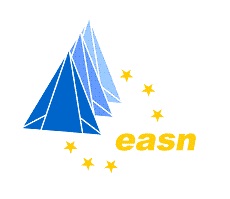 During the last decades Prof. Dieter Schmitt has been recognized as one of the key personalities of the European aeronautics community. His career includes both an impressive industrial part as well as a high quality academic aspect.
During the last decades Prof. Dieter Schmitt has been recognized as one of the key personalities of the European aeronautics community. His career includes both an impressive industrial part as well as a high quality academic aspect.
Dieter Schmitt is one of the initiators of the EASN concept and has generously offered his services during all these years to EASN, either as Vice President at Airbus, Professor in Munich or Technical Director at Bauhans Luftfahrt.
To honor his services to the EASN Association, the General Assembly of EASN has unanimously decided to grant to Prof. Dieter Schmitt the title of Honorary EASN member.
The honoring event took place on October 28th, in the frame of the 4th EASN Workshop which was held in RWTH Aachen from October 27th until 29th. The tribute was attended by more than 100 distinguished participants.
For more information please visit the EASN website
Interview of Prof. Dieter Schmitt
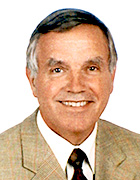 Prof. Dieter Schmitt reviews and evaluates the up to date achievements of Aeronautics-related research in Europe and accordingly appraises the prospects of research and innovation for the future.
Prof. Dieter Schmitt reviews and evaluates the up to date achievements of Aeronautics-related research in Europe and accordingly appraises the prospects of research and innovation for the future.
Read the full interview of Prof. Dieter Schmitt on the EASN website
ACARE General Assembly
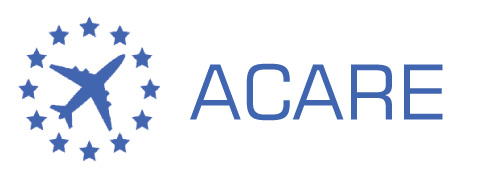 The ACARE General Assembly meeting was held on 26 June, 2014 in Brussels. The objectives of the meeting were focused on Approval of the Annual ACARE report, Discussion and approval of the Guidelines and Priorities and discussions of the next steps. On the agenda there were (1) adoption of the minutes of the previous Le Bourget Meeting; (2) public support for the SRIA implementation; (3) ACARE priorities - input by GA members; (4) status of the achieved Flightpath 2050 goals including presentation of WGs on results and recommendations as well as ACARE annual report 2013/2014. It was decided that the next meeting will be held at Spring 2015. EASN was represented at this ACARE GA meeting by Prof. Zdobyslaw Goraj – EASN vice President and Academic representative to the ACARE Plenary.
The ACARE General Assembly meeting was held on 26 June, 2014 in Brussels. The objectives of the meeting were focused on Approval of the Annual ACARE report, Discussion and approval of the Guidelines and Priorities and discussions of the next steps. On the agenda there were (1) adoption of the minutes of the previous Le Bourget Meeting; (2) public support for the SRIA implementation; (3) ACARE priorities - input by GA members; (4) status of the achieved Flightpath 2050 goals including presentation of WGs on results and recommendations as well as ACARE annual report 2013/2014. It was decided that the next meeting will be held at Spring 2015. EASN was represented at this ACARE GA meeting by Prof. Zdobyslaw Goraj – EASN vice President and Academic representative to the ACARE Plenary.
For more information visit the ACARE website.
4th EASN Association International Workshop on Flight Physics and Aircraft Design
 The European Aeronautics Science Network carried out the 4th out of a series of annual specialized Workshops in the fields of Flight Physics and Aircraft Design. The workshop was successfully held on October 27-29, 2014 in the premises of RWTH Aachen University. In the frame of EASN Association's knowledge and innovation dissemination activities, this three-day event primarily aimed to offer its participants a forum to meet and present among relative audience, the latest advancements in the areas of Flight Physics and Aircraft Design, together with novel and innovative ideas for future research. In this frame, the event proved to be a unique opportunity
for the participants to obtain an overview of the recent advancements in the research scene, with presentations from 33 ongoing research projects and support actions. At the same time, participants had the opportunity to engage into fruitful discussions and networking with more than 150 representatives of the Academia, research community and industry. Finally, key-note presentations from distinguished individuals gave a clear insight on the future Industrial trends and European priorities with respect to the medium and long-term goals, as set by the aviation stakeholders.
The European Aeronautics Science Network carried out the 4th out of a series of annual specialized Workshops in the fields of Flight Physics and Aircraft Design. The workshop was successfully held on October 27-29, 2014 in the premises of RWTH Aachen University. In the frame of EASN Association's knowledge and innovation dissemination activities, this three-day event primarily aimed to offer its participants a forum to meet and present among relative audience, the latest advancements in the areas of Flight Physics and Aircraft Design, together with novel and innovative ideas for future research. In this frame, the event proved to be a unique opportunity
for the participants to obtain an overview of the recent advancements in the research scene, with presentations from 33 ongoing research projects and support actions. At the same time, participants had the opportunity to engage into fruitful discussions and networking with more than 150 representatives of the Academia, research community and industry. Finally, key-note presentations from distinguished individuals gave a clear insight on the future Industrial trends and European priorities with respect to the medium and long-term goals, as set by the aviation stakeholders.
More information on the outcome of the workshop, icluding the performed presentations, is available here.
ACARE WG1: Meeting Societal and Market needs
 EASN has delegated experts into the European Technology Platform (ETP) ACARE (Advisory Council for Aeronautics Research in Europe). Its Working Group 1 is concerned with ‘Meeting Societal and Market Needs’, more precise with the respective Flightpath goals, such as
“Europeans make informed mobility choices enabling affordable access to one another; … 90% of travellers within Europe are able travelling door-to-door within 4 hours, using different transport modes; … flights arrive within 1 minute of the planned arrival time regardless of weather conditions; … an air traffic management system handles at least 25 million flights a year and; … a coherent ground infrastructure is developed for servicing and other connecting facilities.”
EASN has delegated experts into the European Technology Platform (ETP) ACARE (Advisory Council for Aeronautics Research in Europe). Its Working Group 1 is concerned with ‘Meeting Societal and Market Needs’, more precise with the respective Flightpath goals, such as
“Europeans make informed mobility choices enabling affordable access to one another; … 90% of travellers within Europe are able travelling door-to-door within 4 hours, using different transport modes; … flights arrive within 1 minute of the planned arrival time regardless of weather conditions; … an air traffic management system handles at least 25 million flights a year and; … a coherent ground infrastructure is developed for servicing and other connecting facilities.”
One of the current tasks of WG 1 is to follow-up of the implementation of the ACARE goals at European and partially also at national level. One of the instruments are Coordination and Supporting Actions (CSA) that monitor the progress of ACARE goal implementation, such as the CATER CSA (Coordinating Air transport Time Efficiency Research) where EASN is also a consortium partner. This CSA investigates the implementation of the ACARE goals for the research coordination on Time Efficiency in the air transport system.
A further important target is intermodality, in this context the contact to other European Technology Platforms (ETP’s) from other transports modes, i.e. road (ERTRAC), rail (ERRAC) and ship (Waterborne) is essential to identify common interests and to streamline research priorities that can be tackled together.
For more information please visit the ACARE website.
MoU between EASN and EACP
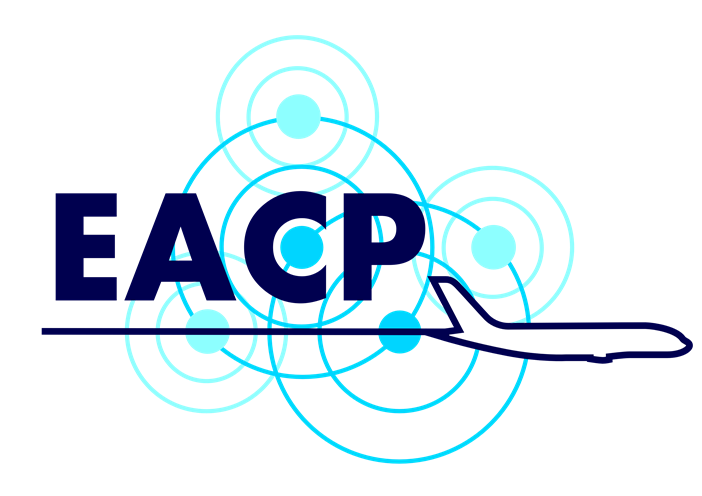 EASN and EACP (European Aerospace Cluster Partnership) have concluded and signed an MoU, aiming at building strong partnerships between EACP and EASN members. The agreement was officially signed during the “Green Mobility Conference 2014” which took place in Hamburg on November 24th.
EASN and EACP (European Aerospace Cluster Partnership) have concluded and signed an MoU, aiming at building strong partnerships between EACP and EASN members. The agreement was officially signed during the “Green Mobility Conference 2014” which took place in Hamburg on November 24th.
EACP is a network of Aerospace Cluster Managers that has been established in 2009 to better answer future challenges and to ensure the strength of the European aerospace market. The partnership aims to foster mutual exchange and to initiate international cooperation projects between European aerospace clusters/regions. Currently, the EACP network counts 34 members from 13 countries representing in total more than 4300 companies, 430 research institutions and 125 administrative bodies.
Among others, an expected benefit from this MoU is to assist the networks members in finding the right partners and best specialists for research and business collaboration. Especially, the cooperation between the world of industry and the world of academia will lead to research closer to the market – in regard to demands for innovation and the quick implementation of products and new technologies.
ACARE WG4: Ensuring safety and security
 The next scheduled meeting to be held in the frame of ACARE WG4: “Ensuring safety and security”, will take place on December 16th 2014, in Brussels, with the aim of “revitalising and/or refocusing WG4 so that Safety and Security stay firmly on the research agenda as priorities in aviation”. This meeting has been organised by the new coordinators of this Working Group (Eric Sivel/Barry Kirwan) who took over due to the retirement of the previous ones (David Young /Werner Kleine-Beek). The date of the meeting has been chosen as it is the day before the OPTICS project’s relevant event, entitled: “Aviation Safety Research and Innovation – Time to Take-off”, to be held at the European Commission headquarters on December 17th and 18th, 2014; and whereby different prominent aviation entities will be giving their vision for future safety research.
The next scheduled meeting to be held in the frame of ACARE WG4: “Ensuring safety and security”, will take place on December 16th 2014, in Brussels, with the aim of “revitalising and/or refocusing WG4 so that Safety and Security stay firmly on the research agenda as priorities in aviation”. This meeting has been organised by the new coordinators of this Working Group (Eric Sivel/Barry Kirwan) who took over due to the retirement of the previous ones (David Young /Werner Kleine-Beek). The date of the meeting has been chosen as it is the day before the OPTICS project’s relevant event, entitled: “Aviation Safety Research and Innovation – Time to Take-off”, to be held at the European Commission headquarters on December 17th and 18th, 2014; and whereby different prominent aviation entities will be giving their vision for future safety research.
For more information please visit the ACARE website and http://www.optics-project.eu/?p=718
International Cooperation
 In order to leverage resources, mitigate risks and establish long term relationships, the European aeronautics sector has identified topics of common interest and mutual benefit with other regions of the world, in particular where these address societal challenges such as a worldwide safe and environmental-friendly air transport system, common standards and win-win situations for technological development.
In the forthcoming transport call, expected to open in a few days, three international cooperation calls are included with Japan, China and Canada respectively. EASN has been actively involved in the preparation of these calls by providing the academia viewpoint and priorities for international collaboration. Furthermore, EASN has already launched its Expression of Interest campaign aiming to assist European academics to network with colleagues from the three above-mentioned countries and become actively involved in consortia preparing proposals responding to the call.
In order to leverage resources, mitigate risks and establish long term relationships, the European aeronautics sector has identified topics of common interest and mutual benefit with other regions of the world, in particular where these address societal challenges such as a worldwide safe and environmental-friendly air transport system, common standards and win-win situations for technological development.
In the forthcoming transport call, expected to open in a few days, three international cooperation calls are included with Japan, China and Canada respectively. EASN has been actively involved in the preparation of these calls by providing the academia viewpoint and priorities for international collaboration. Furthermore, EASN has already launched its Expression of Interest campaign aiming to assist European academics to network with colleagues from the three above-mentioned countries and become actively involved in consortia preparing proposals responding to the call.
Conference on "Transport safety: societal challenges, research solutions"
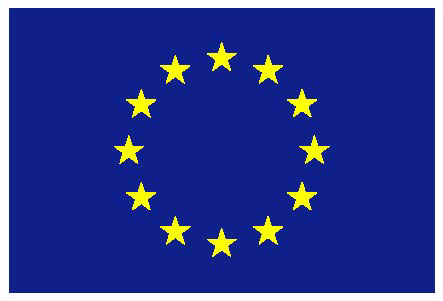 Within the programme of activities of the Italian Presidency of the EU, the Italian Ministry of Education, Universities and Research (MIUR) and the European Commission have successfully organised a European conference on 'Transport safety: societal challenges, research solutions', which took place in Genova, Italy, on 4-5 December 2014. EASN was represented in the Conference
by its Vice-chairman, Prof. Zdobyslaw Goraj, who discussed, among others, the future research needs of the field of Aviation, explored the commonalities and the transferability of best practices across modes, as well as concluded on the main directions and priorities of future R&I work to be carried out at EU level.
Within the programme of activities of the Italian Presidency of the EU, the Italian Ministry of Education, Universities and Research (MIUR) and the European Commission have successfully organised a European conference on 'Transport safety: societal challenges, research solutions', which took place in Genova, Italy, on 4-5 December 2014. EASN was represented in the Conference
by its Vice-chairman, Prof. Zdobyslaw Goraj, who discussed, among others, the future research needs of the field of Aviation, explored the commonalities and the transferability of best practices across modes, as well as concluded on the main directions and priorities of future R&I work to be carried out at EU level.
The final statement of this Conference can be viewed and downloaded here


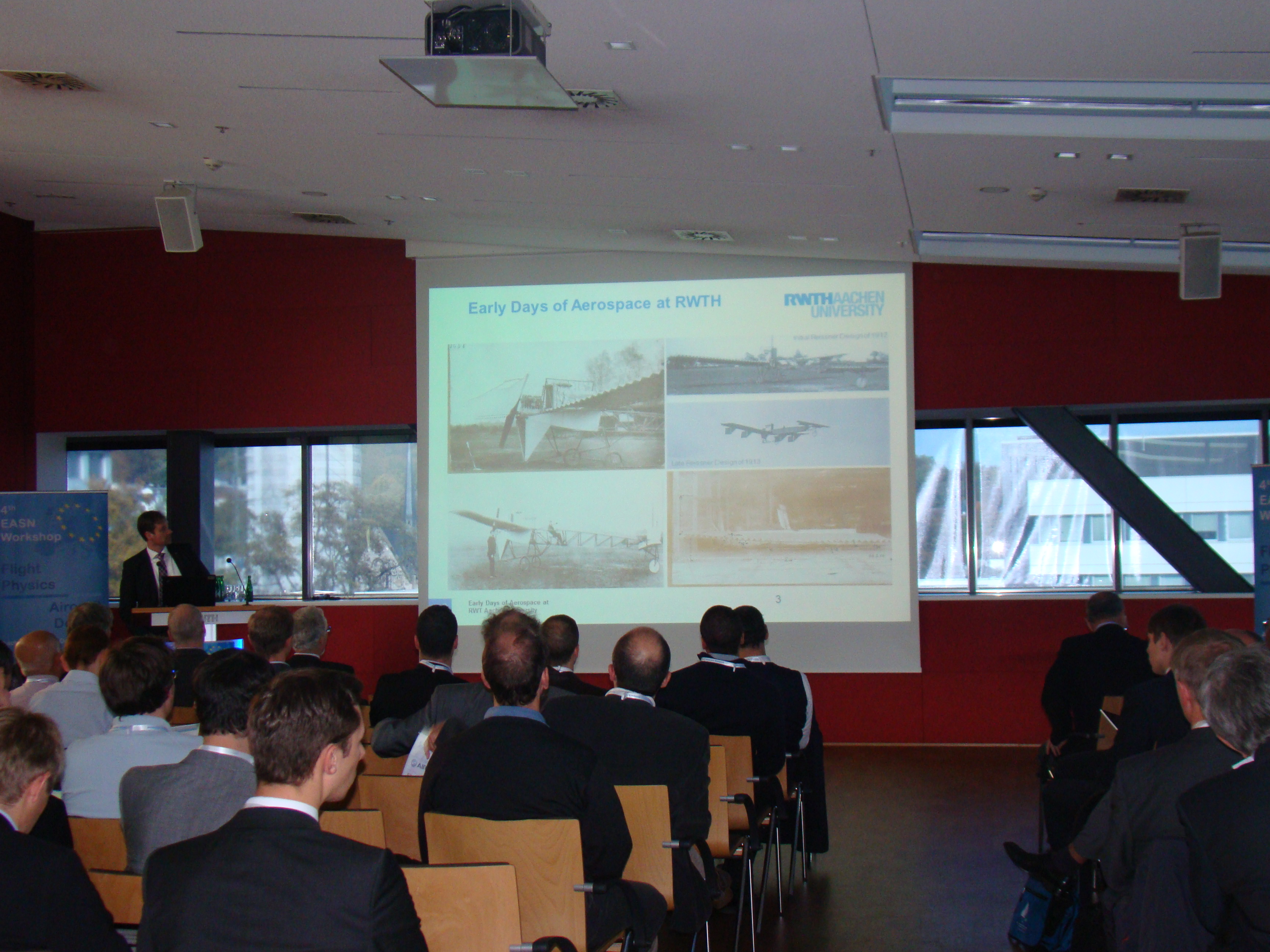
 Since the IASS project has now entered its third and final year, the work performed is now focused on analyzing and further exploring the results that have been produced so far. In this light, during the last six months, the IASS consortium focused on the upscaling process of the produced nanofilled hardeners and microcapsules and on the characterization, manufacturing and testing of the formulations and coupons containing the aforementioned hardeners and microcapsules.
The tests performed along with the models that are being developed, aim in assisting the assessment of the mechanical and electrical behavior of the produced nanocomposites in order to determine the modifications necessary for the production and selection of the nanofillers that fit best the aim of the IASS project. For more information visit the
Since the IASS project has now entered its third and final year, the work performed is now focused on analyzing and further exploring the results that have been produced so far. In this light, during the last six months, the IASS consortium focused on the upscaling process of the produced nanofilled hardeners and microcapsules and on the characterization, manufacturing and testing of the formulations and coupons containing the aforementioned hardeners and microcapsules.
The tests performed along with the models that are being developed, aim in assisting the assessment of the mechanical and electrical behavior of the produced nanocomposites in order to determine the modifications necessary for the production and selection of the nanofillers that fit best the aim of the IASS project. For more information visit the 
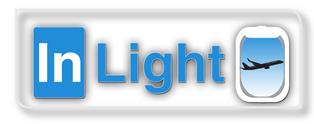
 Laboratory deposition experiments have started and a first set of coatings exhibiting properties according to the state of art has already been reached while fatigue tests are ready to start. Simulations are used to assess the most favorable cold spray conditions for the cases of interest and for the design of the new nozzle equipment. An adapted cooling device to deposit Al alloy coatings at high temperature has been provided, as well as a first prototype of 90deg nozzle that enables coating of inner diameters up to 50 cm depth.
An innovative feeding system to enable the use of fine and low-flowability powders has been further developed. Following the mechanical characterization at high strain rate of the materials, the next step is refinement in order to introduce more accurate material parameters as inputs for the simulation. For more information, please visit our
Laboratory deposition experiments have started and a first set of coatings exhibiting properties according to the state of art has already been reached while fatigue tests are ready to start. Simulations are used to assess the most favorable cold spray conditions for the cases of interest and for the design of the new nozzle equipment. An adapted cooling device to deposit Al alloy coatings at high temperature has been provided, as well as a first prototype of 90deg nozzle that enables coating of inner diameters up to 50 cm depth.
An innovative feeding system to enable the use of fine and low-flowability powders has been further developed. Following the mechanical characterization at high strain rate of the materials, the next step is refinement in order to introduce more accurate material parameters as inputs for the simulation. For more information, please visit our 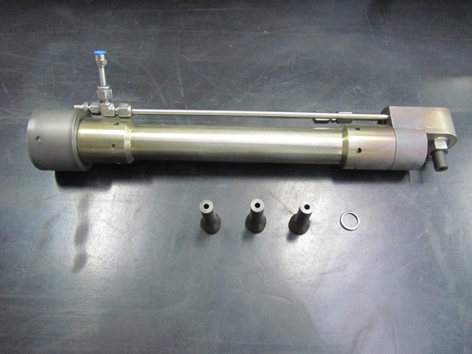
 With the first full year of actions under its belt, all the activities of the i-VISION project are well on track having completed the first phase of its 36-month period. During this period, the detailed design and implementation of the individual i-VISION components (e.g. software module, 3D cockpit model etc.) are performed. The development of a human-cockpit operations analysis module will provide the means and tools for engineers to design aircraft cockpits based on advanced human task analysis methodologies.
With the first full year of actions under its belt, all the activities of the i-VISION project are well on track having completed the first phase of its 36-month period. During this period, the detailed design and implementation of the individual i-VISION components (e.g. software module, 3D cockpit model etc.) are performed. The development of a human-cockpit operations analysis module will provide the means and tools for engineers to design aircraft cockpits based on advanced human task analysis methodologies.
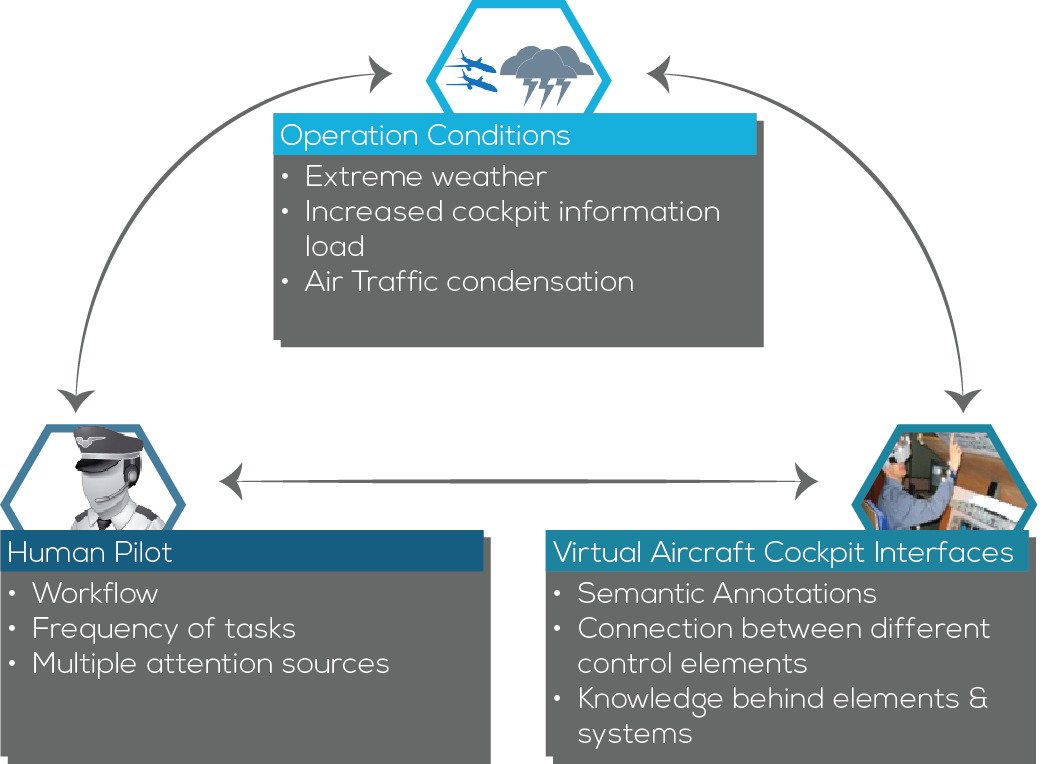
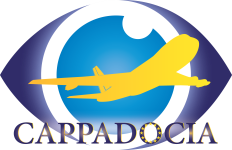 With the 1st full year of operations under its belt, the CAPPADOCIA project (Coordination Action Pro “Production, Avionics, Design” on Cost-efficiency in Aeronautics) has passed a number of important milestones. The CAPPADOCIA methodological approach and its associated tools -devoted both to the SRIA vol. 2 and the FP7 cost-efficiency related projects analyses-, have been defined, tested and are now fully implemented. Moreover, with the ultimate objective of providing coherent strategic recommendations to close gaps in the research landscape and overcome bottlenecks to innovation,
15 individual “key” RTD experts have been interviewed, as well as 7 EC-funded projects have been fully assessed. Accordingly, the most frequently shared gaps and bottlenecks have been identified, while some preliminary associated “competitiveness” recommendations have been provided. For further information on the CAPPADOCIA latest news, progress and achievements, view the project’s newly released (2nd)
With the 1st full year of operations under its belt, the CAPPADOCIA project (Coordination Action Pro “Production, Avionics, Design” on Cost-efficiency in Aeronautics) has passed a number of important milestones. The CAPPADOCIA methodological approach and its associated tools -devoted both to the SRIA vol. 2 and the FP7 cost-efficiency related projects analyses-, have been defined, tested and are now fully implemented. Moreover, with the ultimate objective of providing coherent strategic recommendations to close gaps in the research landscape and overcome bottlenecks to innovation,
15 individual “key” RTD experts have been interviewed, as well as 7 EC-funded projects have been fully assessed. Accordingly, the most frequently shared gaps and bottlenecks have been identified, while some preliminary associated “competitiveness” recommendations have been provided. For further information on the CAPPADOCIA latest news, progress and achievements, view the project’s newly released (2nd) 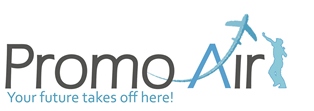 The Promo – Air project is reaching the end of its lifetime and its activities are now focused on two main axis. The attractive digital educational material produced in the frame of the project, is being widely disseminated to the largest possible number of European students. In order to achieve this objective, a pan-European quiz competition has been settled. The winner will be offered an all-paid visit to A330 and A380 Airbus Assembly Line, in Toulouse, France generously sponsored by Airbus S.A.S. and EASN Association as well.
The aforementioned actions are combined with the attempt to invite European Universities to be involved to the Promo – Air project and host the major dissemination event, the European Aviation Week. In this event, high-school students from all over Europe will have the opportunity to visit Universities and Institutes of their local societies and explore the fascinating world of Aeronautics through educational material and hands-on experience. For more information on how your university or institute could be involved in this initiative, please follow this
The Promo – Air project is reaching the end of its lifetime and its activities are now focused on two main axis. The attractive digital educational material produced in the frame of the project, is being widely disseminated to the largest possible number of European students. In order to achieve this objective, a pan-European quiz competition has been settled. The winner will be offered an all-paid visit to A330 and A380 Airbus Assembly Line, in Toulouse, France generously sponsored by Airbus S.A.S. and EASN Association as well.
The aforementioned actions are combined with the attempt to invite European Universities to be involved to the Promo – Air project and host the major dissemination event, the European Aviation Week. In this event, high-school students from all over Europe will have the opportunity to visit Universities and Institutes of their local societies and explore the fascinating world of Aeronautics through educational material and hands-on experience. For more information on how your university or institute could be involved in this initiative, please follow this 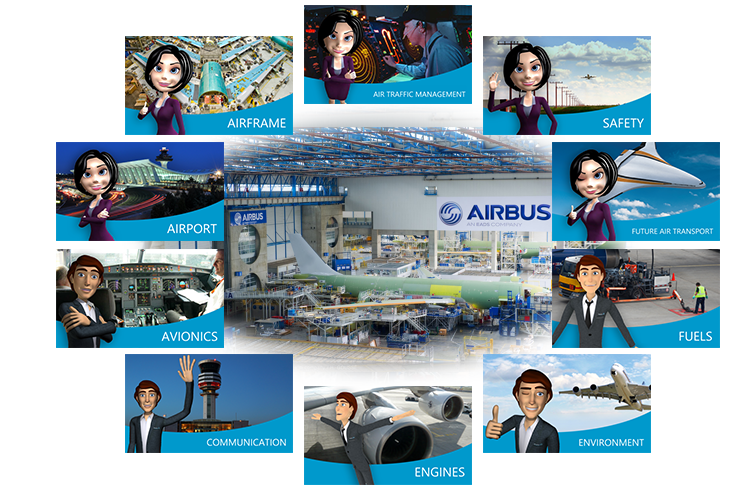
 Approaching its final stage, the HIKARI project held successfully its
Approaching its final stage, the HIKARI project held successfully its 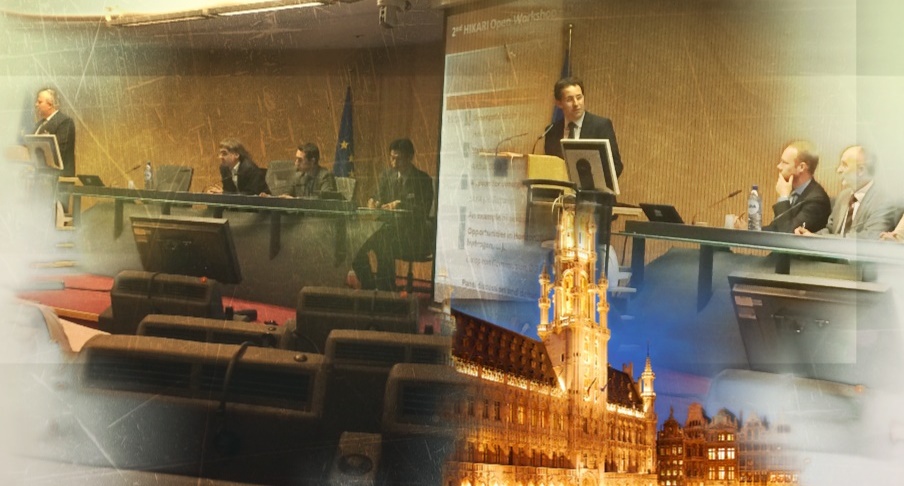
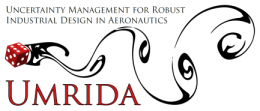 The latest activities are focused on the construction of a unique validation database with prescribed uncertainties on a series of industrial challenges. Different simulation approaches for Uncertainty Quantification (UQ) of complex industrial multi-physics applications are developed and integrated into industry ready tools. For example, a tool for combined operational and geometrical uncertainties for turbo-machinery cases has been successfully applied to a transonic rotor.
Fully automatic geometry modification, automated meshing and computation set-up are achieved. Drastic reduction in computation time is reached by introduction of a sparse grid approach. This approach and other state-of the-art UQ methodologies and tools developed within the project will be presented in the first UMRIDA workshop on
The latest activities are focused on the construction of a unique validation database with prescribed uncertainties on a series of industrial challenges. Different simulation approaches for Uncertainty Quantification (UQ) of complex industrial multi-physics applications are developed and integrated into industry ready tools. For example, a tool for combined operational and geometrical uncertainties for turbo-machinery cases has been successfully applied to a transonic rotor.
Fully automatic geometry modification, automated meshing and computation set-up are achieved. Drastic reduction in computation time is reached by introduction of a sparse grid approach. This approach and other state-of the-art UQ methodologies and tools developed within the project will be presented in the first UMRIDA workshop on 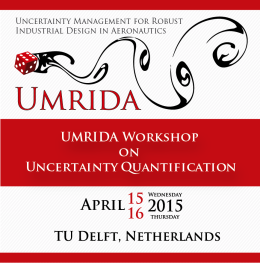 The first UMRIDA workshop on Uncertainty Quantification (UQ) will take place on April 15th-16th at TU Delft, Netherlands, and will examine the application of UQ techniques accounting for a large number of simultaneous uncertainties. The overall objective, which can be also regarded as a challenge for the participants, is the "Development and application of UQ methods for a large number of uncertainties (~10) within an acceptable CPU return time of 10 hours on no more than 100 cores parallel processors."
A series of test cases such as rotors, wing-bodies, high-lift systems and airfoils are open to participants from outside the consortium. Presentations are further expected to focus on UQ applications to industrial relevant configuration and on new developments in the field of UQ. Abstract submission is now open and until March 1st 2015. For more information, please visit the workshop website
The first UMRIDA workshop on Uncertainty Quantification (UQ) will take place on April 15th-16th at TU Delft, Netherlands, and will examine the application of UQ techniques accounting for a large number of simultaneous uncertainties. The overall objective, which can be also regarded as a challenge for the participants, is the "Development and application of UQ methods for a large number of uncertainties (~10) within an acceptable CPU return time of 10 hours on no more than 100 cores parallel processors."
A series of test cases such as rotors, wing-bodies, high-lift systems and airfoils are open to participants from outside the consortium. Presentations are further expected to focus on UQ applications to industrial relevant configuration and on new developments in the field of UQ. Abstract submission is now open and until March 1st 2015. For more information, please visit the workshop website 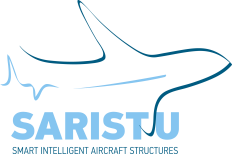 SARISTU has completed 3/4 of its project duration and is on the road to successful project completion in its fourth and final year. Some of the highlights of this period include the completion of the design activities for the major wing and fuselage demonstrations. Also, the launch of the manufacturing of major demonstrator parts and the completion of the first major sub-assemblies. The sub-assemblies of the Winglet Advanced Trailing Edge,
the Enhanced Adaptive Droop Nose and the Advanced Trailing Edge for the Wing demonstrator have also been completed. The most critical manufacturing steps of the 5x4 metre door surround structure have already been performed. The overall progress is fully meeting expectations as is also highlighted by the 200 publications and dissemination activities already made or in detailed preparation by the partners. For more information please visit the
SARISTU has completed 3/4 of its project duration and is on the road to successful project completion in its fourth and final year. Some of the highlights of this period include the completion of the design activities for the major wing and fuselage demonstrations. Also, the launch of the manufacturing of major demonstrator parts and the completion of the first major sub-assemblies. The sub-assemblies of the Winglet Advanced Trailing Edge,
the Enhanced Adaptive Droop Nose and the Advanced Trailing Edge for the Wing demonstrator have also been completed. The most critical manufacturing steps of the 5x4 metre door surround structure have already been performed. The overall progress is fully meeting expectations as is also highlighted by the 200 publications and dissemination activities already made or in detailed preparation by the partners. For more information please visit the 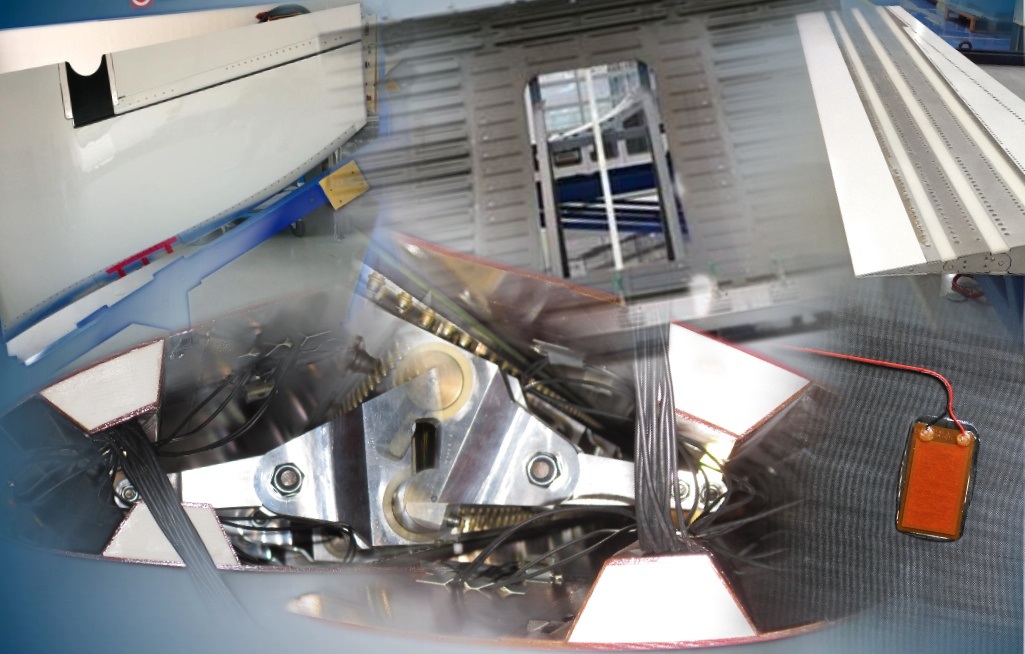
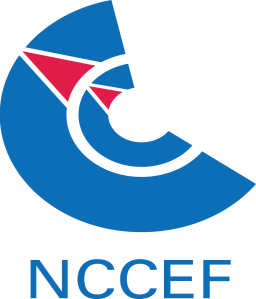 A new Aerospace Technology Institute (ATI) research project has begun at the National Composites Certification and Evaluation Facility (NCCEF) at the University of Manchester. It will run in partnership with Airbus UK, Spirit Aerosystems and the National Composites Centre until April 2016. The project is focused on advanced understanding and evaluation of new carbon fibre technologies for next-generation passenger aircraft in Europe.
A new Aerospace Technology Institute (ATI) research project has begun at the National Composites Certification and Evaluation Facility (NCCEF) at the University of Manchester. It will run in partnership with Airbus UK, Spirit Aerosystems and the National Composites Centre until April 2016. The project is focused on advanced understanding and evaluation of new carbon fibre technologies for next-generation passenger aircraft in Europe.
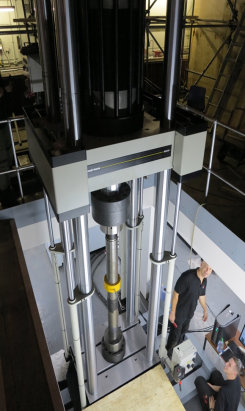
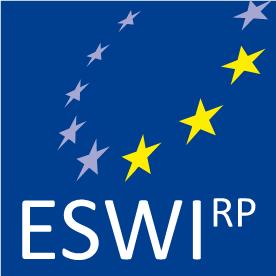 A wind tunnel test was performed at DNW LLF as part of the EU-funded ESWIRP project to study the effects of pylon trailing edge blowing on pusher propeller – pylon interactions. The experiment, named APIAN-INF, involved contributions from Airbus, DLR, DNW, INCAS, TsAGI, TU Braunschweig, TU Delft, and the University of Cambridge. Preliminary results show noise reductions of 4 to 9 dB due to application of the pylon blowing system.
A wind tunnel test was performed at DNW LLF as part of the EU-funded ESWIRP project to study the effects of pylon trailing edge blowing on pusher propeller – pylon interactions. The experiment, named APIAN-INF, involved contributions from Airbus, DLR, DNW, INCAS, TsAGI, TU Braunschweig, TU Delft, and the University of Cambridge. Preliminary results show noise reductions of 4 to 9 dB due to application of the pylon blowing system.
 Development of surfaces for metallic components fabricated by additive manufacturing
Development of surfaces for metallic components fabricated by additive manufacturing Greener Aeronautics Symposium creates new collaborative links
Greener Aeronautics Symposium creates new collaborative links

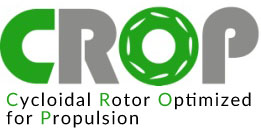 The CROP project (Cycloidal Rotor Optimized for Propulsion) introduces an innovative propulsion system for aircraft based on the cycloidal rotor concept, using an integrated approach that includes the electric drive train, airframe integration and an environmentally friendly energy source. The possibilities opened by the development of an air vehicle that is capable to attain high subsonic velocities, and also capable of VTOL without the need to make a radical reconfiguration of its geometry are enormous: - more convenient commercial transportation - rapid disaster/rescue response - flexible multi-mission military defense vehicles - green friendly vehicles able to be powered by renewable or photovoltaic electricity.
The CROP project (Cycloidal Rotor Optimized for Propulsion) introduces an innovative propulsion system for aircraft based on the cycloidal rotor concept, using an integrated approach that includes the electric drive train, airframe integration and an environmentally friendly energy source. The possibilities opened by the development of an air vehicle that is capable to attain high subsonic velocities, and also capable of VTOL without the need to make a radical reconfiguration of its geometry are enormous: - more convenient commercial transportation - rapid disaster/rescue response - flexible multi-mission military defense vehicles - green friendly vehicles able to be powered by renewable or photovoltaic electricity.